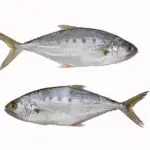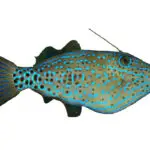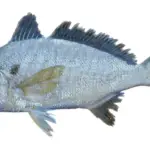Mangrove snappers, sometimes referred to as Gray Snappers (Lutjanus griseus), are a versatile and common species of fish, living in warm coastal saltwater environments throughout North America.
But how do they taste? Is Mangrove snapper any good to eat? Well, the short answer is yes, mangrove snappers are very good to eat!
In this article, I’ll answer a few commonly asked questions about their taste & texture, as well as how to prepare them and a delicious (and easy) recipe.
Table of Contents
- Is Mangrove Snapper Edible?
- What Do Mangrove Snappers Taste Like?
- Things to Know While Preparing Mangrove Snapper
- How To Descale A Mangrove Snapper
- How Should You Fillet A Mangrove Snapper?
- How To Prepare Mangrove Snapper Meat
- Fresh Lemony Mangrove Snapper Recipe
- Where Can I Find Mangrove Snapper?
- How To Identify Mangrove Snappers?
- Frequently Asked Questions
- Conclusion
Is Mangrove Snapper Edible?
Mangrove snappers are edible, and in fact, they are highly prized by anglers for their hard fights and tasty flavor. The meat is semi-firm and is best prepared fried or baked.
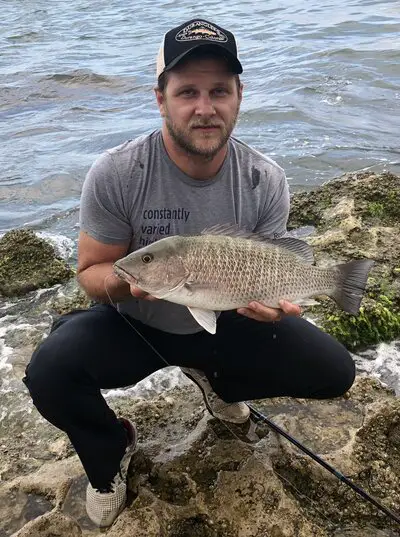
Their mild and nutty taste is similar to other snappers, making them a popular choice among anglers.
Despite their smaller size, they can actually put up quite a fight when they’re caught due to their large muscle content.
What Do Mangrove Snappers Taste Like?
Their flavor has been likened to red snapper, as it also tastes sweet and nutty. Since they’re mild white fish, they are versatile when paired with other foods, and the texture of their meat is quite flaky.
This type of fish goes great with fresh flavors like lemon, cucumber, and other forms of citrus.
Things to Know While Preparing Mangrove Snapper
When first caught, make sure to grab the fish from below their mouth on their ventral side, because their spines on their dorsal side can easily spike you if you’re not careful.
Another precaution you should be wary of is the teeth on these fish. They have two unique ‘fangs’ protruding from their mouths that can be dangerous if you get your finger stuck in there!
Ensure that when you’re handling the fish, especially if it is still alive, you keep your fingers clear of their ‘snappers.’
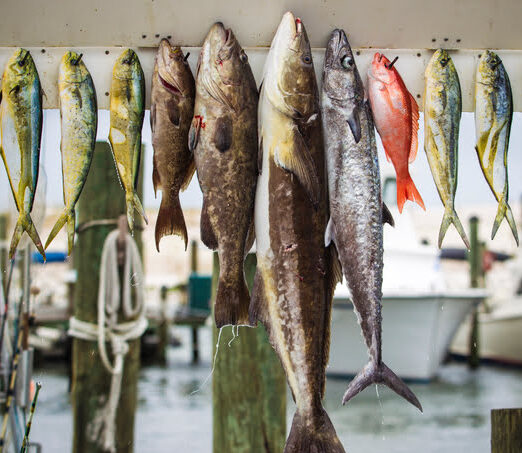
Do You Love Seafood?
If you catch an undersized fish, it is important to release it. By using a circle or half-circle hook, you can catch the fish in the corner of their mouth, allowing them to have a much higher chance of surviving.
This way you can properly assess their size before harvesting them.
Make sure you’re keeping up to date with your local fishing regulations, gear restrictions, and minimum size limits, as their minimum size limit in Florida is around 10 inches or 25 cm as of 2022.
How To Descale A Mangrove Snapper
First, you will want to scrape all of their scales off from the tail to the head, using either a knife or a spoon.
You may be wondering why you need to remove fish scales in the first place, or if they are even edible.
Generally, once the scales are removed it will be a lot easier to filet the fish.
How Should You Fillet A Mangrove Snapper?
You will start from behind the eye and run your knife along their dorsal spine all the way to their tail. Make sure you get rid of the pin bones by the rib cage and you will have a perfect fillet – skin and all.
You will know they’re ready when you run your fingers down the fillet and feel no bones protruding.
How To Prepare Mangrove Snapper Meat
Keep the fillets on ice and you can wait to rinse your fillets right before you begin to cook them.
Take this time to double-check check all the scales are off and bones are out of the fillet prior to cooking.
Fresh Lemony Mangrove Snapper Recipe
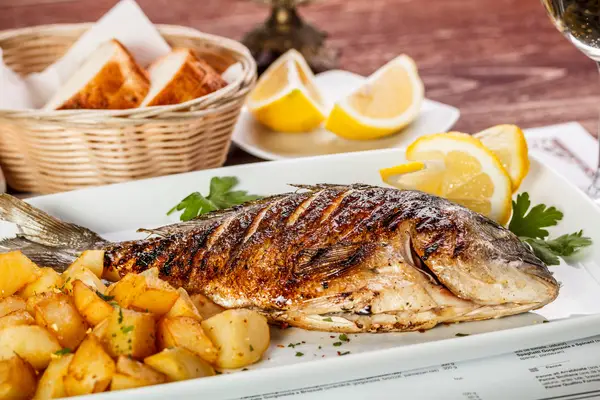
This is an ideal and easy recipe pairing this white and flaky snapper with a fresh lemony marinade. The flavor profile of Mangrove Snapper is complimented perfectly with a sweet balsamic reduction.
If you are ever looking for different recipes to use with Mangrove snapper, you should check out sources such as the University Of Florida, which offers specialized recipes for game fish!
Since Mangrove Snapper is so thin, you don’t really need to flip the fish when you cook it on the grill.
Many people choose to leave the skin on and by marinating the skin and placing it face down on the grill, you’ll end up with a crispy and tasty fillet.
Ingredients:
- As many fillets as desired
- 1 tsp garlic powder
- Juice from 1 lemon
- Pinch of coriander
- Pinch of salt
- Pinch of pepper
- 1 tbsp peanut oil (or another high smoke-point oil)
- Drizzle of balsamic reduction
Instructions:
- Score the skin to prevent the skin from curling while grilling.
- Dry the skin to prevent the skin from scorching on the grill.
- Marinate the skin with salt, ½ of the lemon juice, pepper, coriander, and garlic powder.
- Next, you will coat a stainless steel pan with a high smoke point oil like peanut oil and heat it up to medium heat.
- Place the fish skin side down in the pan.
- Depending on the fillet, cooking will only take between 6-12 minutes so ensure you keep checking the skin side to avoid any burning.
- Once the skin looks dark brown and the internal temperature of the fish is around 137°F or 58°C take the fish off the grill.
- Drizzle with the remaining lemon juice and balsamic reduction.
Where Can I Find Mangrove Snapper?
Mangrove snappers, staying true to their name, frequently inhabit brackish waters around mangroves.
They are the most common species of snapper in the warmer east coast waters and are usually found swimming either near mangroves, dock pilings, rocky reefs, harbor walls, and shipwrecks.
You will most likely find want to jig for these fish with live bait (squid, baitfish, shrimp) as they like to swim near the bottom near a structure.
Most often, you will find these fish in the first 160 ft or 50 m of water, but they can be found between 16-591 ft or 5-180 m deep.
Since they are quite easy to catch due to their schooling behaviors, these fish are ideal for those wanting to dip their toes into catching fish for the first time!
Catching Mangrove Snapper is a great way to spend time with someone who might be interested in starting to fish themselves.
If not many people in the family are keen on heading out to fish, you can always scout for some Mangrove Snapper at the fish market or even online.
How To Identify Mangrove Snappers?
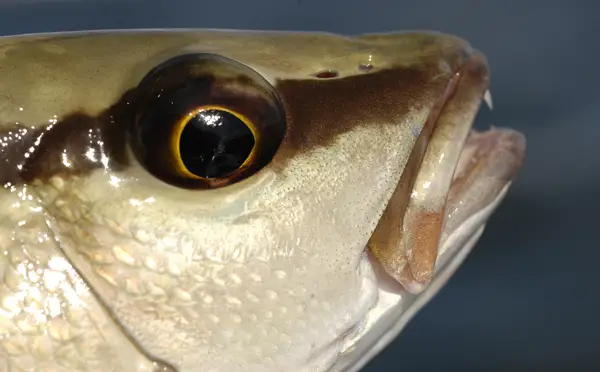
Color isn’t a great indicator for identifying these fish as they can range from grey to copper red.
However, the dark stripe running between their eyes when you look at them from a bird’s eye view is a helpful identification trait.
Mangrove Snappers typically range from 8 – 14 inches or 20 – 35 cm long and around 0.5 – 2 lbs or 0.2 – 0.9 kg in weight, making them ideal for light or medium tackle.
Make sure you don’t confuse the Mangrove Snapper with their look-alike species – the dog snapper (L.jocu).
Dog snappers typically have a lighter triangle of color with a blue band under their eyes and their two ‘fangs’ are even larger than those of Mangrove Snappers.
Frequently Asked Questions
How Healthy Is Mangrove Snapper Meat?
Mangrove Snappers are low-fat and low-cholesterol fish.
They also have incredibly high-protein fillets with a huge range of vitamins such as vitamins A, B6, B12, C, D, and E and thiamine, choline, niacin, folate, and riboflavin.
Is Mangrove Snapper tasty?
They are an incredibly popular fish to eat due to their light, sweet and delicious flavor.
How Sustainable Is Eating Mangrove Snapper?
Mangrove snappers are actually a great choice for those wanting to minimize their environmental impact in comparison to other more endangered snappers.
This is because Mangrove Snappers are a widely abundant and available fish, meaning eating them won’t leave a lasting impact on their ecosystem.
What‘s the Difference Between Red Snapper and Mangrove Snapper?
Red Snapper is often regarded as the tastiest fish of all the snappers. They have a more pointed snout and thin lips in comparison to the Mangrove Snappers’ thick lips and blunt snout.
Red Snappers are larger and usually live offshore deeper than 50 ft or 15 m, as opposed to Mangrove Snappers, who are smaller and live closer inshore.
Is Mangrove Snapper Skin Edible?
Yes! Once scales are removed, you can most definitely eat their skin. Cooking their crispy skin is a delicious and efficient way to best use all parts of the fish.
Are There Other Names For Mangrove Snappers?
People also refer to Mangrove Snapper as grey snapper, mangrove jack, creek red bream, or dog bream, just to name a few.
Is Mangrove Snapper Kosher?
Yes, all snappers are generally considered kosher.
Conclusion
Mangrove Snappers are most definitely edible and pair well with light and fresh flavors to make for a healthy meal.
They’re tasty, sustainable, and easy to catch, making them a popular choice for both new and experienced anglers.

Growing up in Florida, I’ve been surrounded by saltwater my entire life…and I love sharing my passion with others.
To learn more about why I started Saltwater Mecca, visit the ABOUT page.
Thank you for reading this article. Browse around & have some fun!

